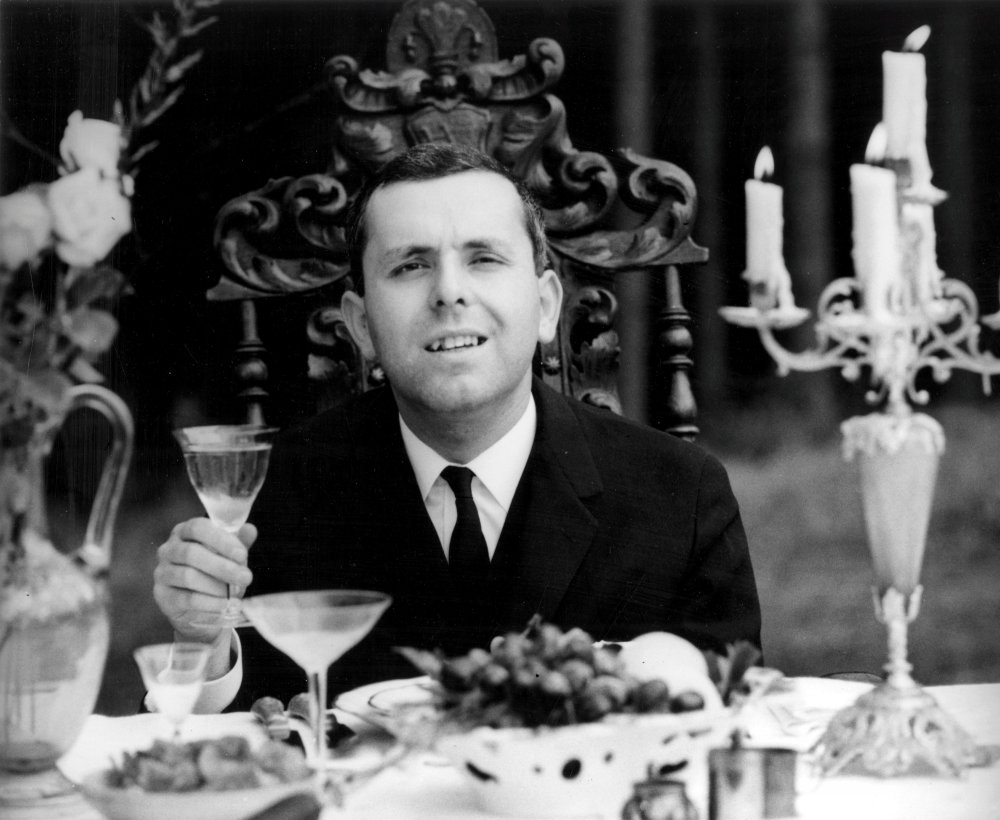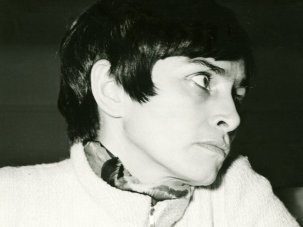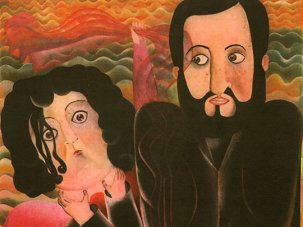“You know, Němec, we can’t let you make movies. You are so clever and such a swine. You would learn how to do it better than those who we are allowing to work now, those non-talented cretins. You would build up your position and when the party and society stopped watching you, you would stab us in the back. You are unreliable. Simply forget about making films again.”
Thus did Kamil Pixa, the general manager of Krátky Film Praha, explain why he felt that hiring director Jan Němec would be a risk too far. By this time (the late 1960s) Němec had also been blacklisted by the Barrandov Film Studios, and in 1973 his best-known film, the sociopolitical satire The Party and the Guests (1966), was one of just four to be formally ‘banned forever’ by the Communist government.
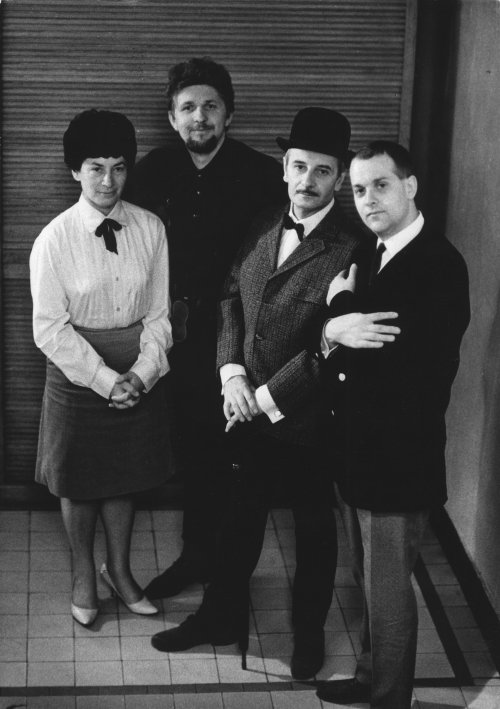
Right to left: Němec with his actor Lindsay Anderson, DP Miroslav Ondříček and an unidentified woman making Martyrs of Love in 1967
Němec was by no means the only Czech filmmaker of his generation to fall foul of the authorities post-1968 – Jiří Menzel, Věra Chytilová and František Vláčil were also beginning several-year bans, and Miloš Forman and Ivan Passer might have joined them had they not decided to emigrate. But it’s easy to see why Němec was considered particularly dangerous: of that group, he and Chytilová were the most aesthetically and polemically confrontational, and even Chytilová wasn’t as openly subversive as a man who cast many supporting roles in The Party and the Guests with known dissidents. Dissidence ran in Němec’s family: his cousins included the psychologist Jiří Němec and the writer and future Czech President Václav Havel, both of whom would become leading lights in the Charter 77 movement.
Born in Prague on 12 July 1936, Jan Němec originally planned to pursue his first love, jazz. His father persuaded him that film offered better career prospects, and so he enrolled at FAMU, the Prague film school, where he became particularly close friends with Menzel, Chytilová and Ewald Schorm (whose The End of a Priest (1968) would also be ‘banned forever’). There, Němec discovered and devoured the work of Ingmar Bergman, Robert Bresson, Luis Buñuel, Federico Fellini and Alain Resnais. All would have a visible effect on his own work.
But Němec was also very much his own man. After adapting a short story by Arnošt Lustig for his graduation film, A Loaf of Bread (Sousto, 1960), he collaborated directly with Lustig on his feature debut Diamonds of the Night (Démanty noci, 1964), in the process stripping the novella Darkness Casts No Shadow down to barest essentials. It’s about two young teenagers fleeing a presumably Holocaust-connected train ride, only to find themselves hunted down by a band of old men whose physical decrepitude doesn’t make them any less lethal. But the film is as much about the boys’ psychological inner life: as Němec explained, “I was not interested in psychology in the true sense of the term, in a faithful depiction of man’s mental processes, but in an examination of the subconscious. That is what appeals to me most in films – the possibility of discovering the secrets of man’s subconsciousness and dreams.”
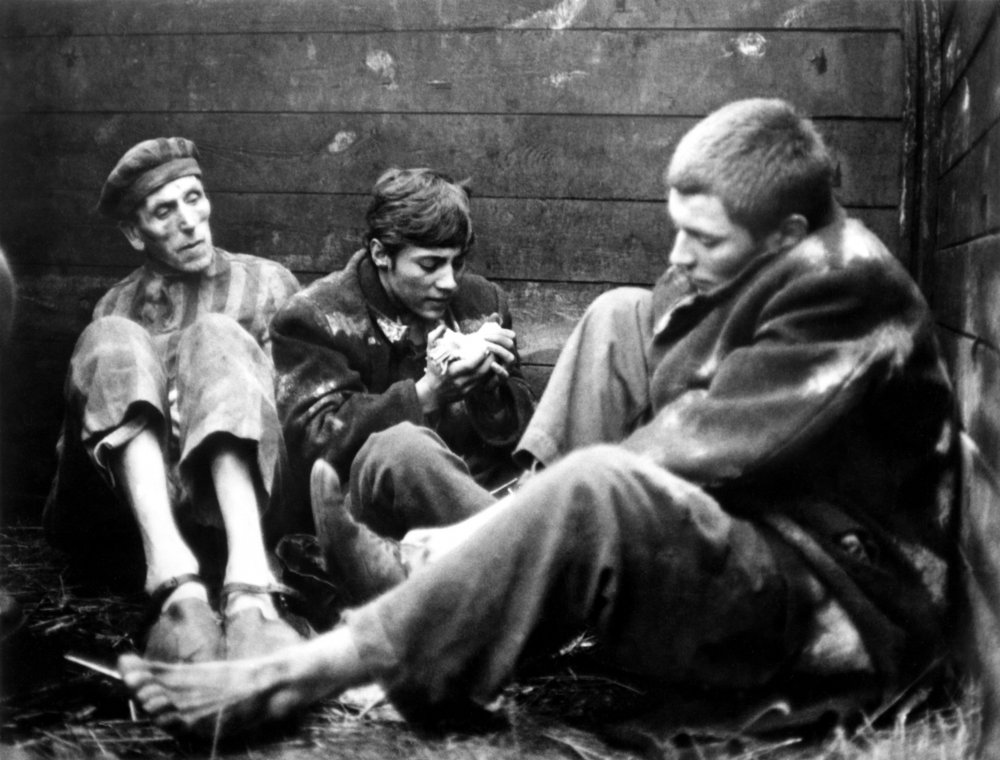
Diamonds of the Night (Démanty noci, 1964)
Fortuitously, the film was shot by two of the greatest Czech cinematographers, with Jaroslav Kučera calling the shots, and the near-neophyte Miroslav Ondříček as his assistant. From its virtuoso opening shot, the camera seemingly shooting out of the traps like a greyhound, it’s a masterclass in hand-held, restlessly moving cinematography. Miroslav Hájek’s editing, inspired by Resnais’ time-slips, juggles past and present in unexpected flashbacks (and sometimes imaginary flashforwards, with the scene in the farmhouse mulling multiple narrative possibilities), while František Černý’s sound design is as scalpel-precise as anything in Bresson, a tolling bell acting as a regular leitmotif. It’s an astonishing debut, and its lasting importance is demonstrated by it coming in at number seven in a 1998 Czech and Slovak critics’ poll that attempted to establish a national canon. (Vláčil’s Marketa Lazarová was first, The Party and the Guests joint twelfth.)
Němec’s next project reunited him with six FAMU contemporaries after they decided to pay tribute to the writer Bohumil Hrabal. Included in the portmanteau film Pearls of the Deep (Perličky na dně, 1965), Němec’s The Impostors (Podvodníci) was a fatalistic ten-minute comedy about two elderly men in a hospital ward swapping typically Hrabalian shaggy-dog reminiscences about their allegedly distinguished journalistic and operatic careers. When death silences them for good, the hospital staff reveal the prosaic truth.
By 1966, his thirtieth year, Němec was already established as one of the most promising of the new Czech directors, and he encountered surprisingly few difficulties in getting his second feature off the ground. A brilliantly conceived and executed Surrealist allegory of the corruption of absolute power, The Party and the Guests was co-written and designed by his then wife Ester Krumbachová (one of the Czechoslovak New Wave’s vital creative figures) and performed largely by non-professional friends (including cousin Jiří) amongst the group of people coercively ‘persuaded’ to join a woodland celebration.
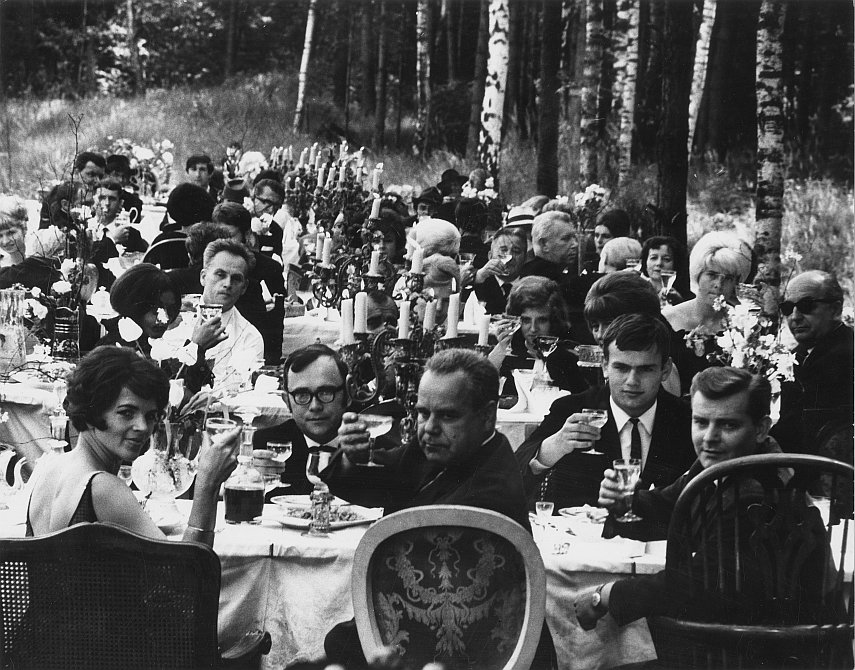
The Party and the Guests (O slavnosti a hostech, aka A Report on the Party and the Guests, 1966)
When completed, it was widely assumed by many (including the then Czechoslovak President Antonín Novotný) to be a direct attack on the Communist government, although it’s closer to an absurdist satire, squarely in line with what Samuel Beckett, Eugene Ionesco and indeed Václav Havel were doing in the theatre. Critics also correctly divined the strong influence of Luis Buñuel, although of the two Buñuel films that it most strikingly resembles, Němec hadn’t seen The Exterminating Angel (1962) and The Discreet Charm of the Bourgeoisie (1972) had yet to be made – although either title could conceivably be applied to Němec’s film when thinking of the far-reaching powers of its white-clad, deeply sinister ‘host’, or the discreetly charming picnickers who are generally content to go along with the film’s increasingly bizarre events, even if it means denouncing a former companion (played by Evald Schorm).
The film was shelved for two years, eventually released following the abolition of censorship during the Prague Spring of 1968. In the meantime Němec made his third feature, Martyrs of Love (Mučedníci lásky, 1967). Another collaboration with Krumbachová (they would divorce in 1968), it was a triptych of mournful comedies characterised by love turning sour; it was also a tribute to the 1920s – overtly in its debt to silent comedy, more subtly in its tribute to the Czech Poetism movement – and to the 1960s in its use of popular song in lieu of spoken dialogue. (In the US it became the maiden release of New Line Cinema, an arthouse distributor that would latterly be known for its A Nightmare on Elm Street and Austin Powers franchises.)
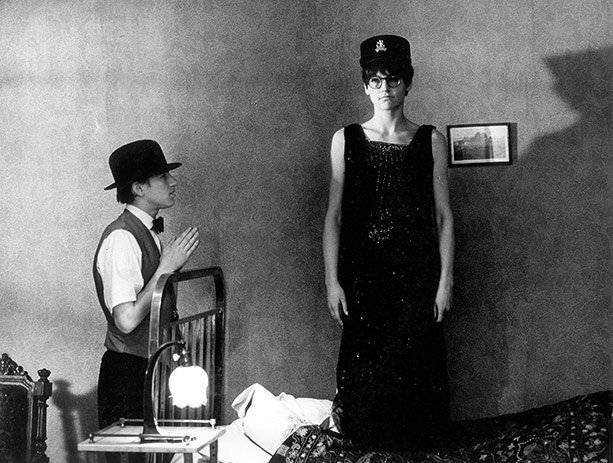
Martyrs of Love (Mučedníci lásky, 1967)
Blacklisted following the Soviet invasion – of which he was a first-hand witness, filming some of the most vivid footage of the tanks rolling in – Němec turned to television, collaborating with his second wife, the singer Marta Kubišová, on musical items. He also made a documentary in collaboration with the novelist Josef Škvorecký (briefly glimpsed in The Party and the Guests) called Oratorio for Prague, which began shooting in the first half of 1968 as a celebration of his native city, only to turn into a despairing elegy later on. Unshowable at home, the footage was successfully smuggled out of the country.
Despite his battles with the authorities, Němec chose not to join his compatriots Forman and Passer in Hollywood, swiftly regretting it as he was forced to surrender his passport in 1969. That same year he co-wrote a script, Heart Beat, with Václav Havel, a black comedy about a gangland racket involving heart transplants, but he couldn’t do anything with it until 2004, when parts resurfaced in his autobiographical video feature Landscape of My Heart. He eventually filmed it as Heart Beat 3D in 2010.
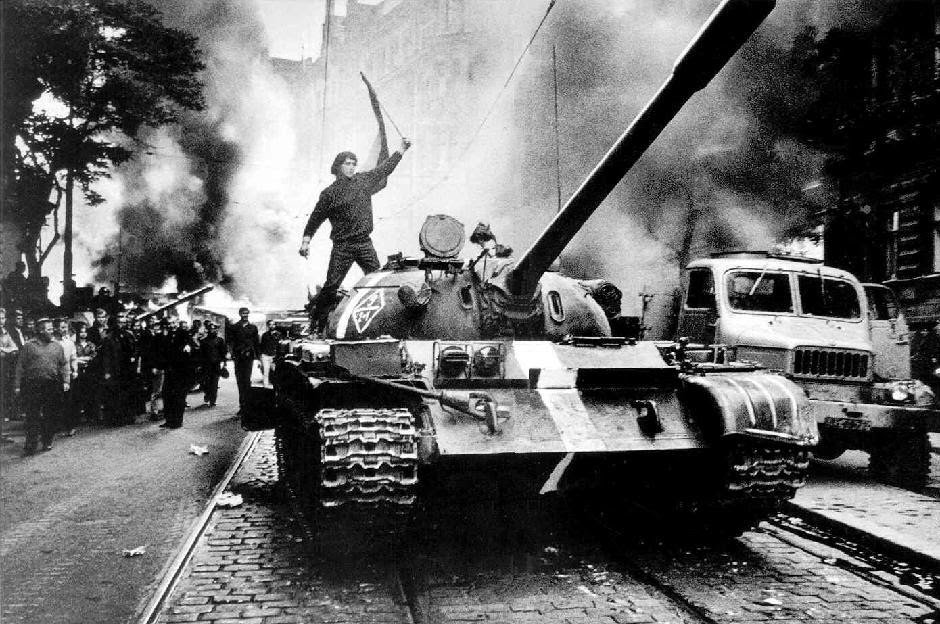
Oratorio for Prague (1968)
Shortly after divorcing Kubišová, Němec finally left Czechoslovakia in 1974 (under duress: the choice was between prison or exile), and after a brief sojourn in western Europe he ended up in California, where he made music promos, documentaries and even wedding videos. One of his documentaries, Peace in Our Time? (co-directed by Otto Olejár), was made for Channel 4 and screened in 1988, the 50th anniversary of the betrayal of Czechoslovakia (“a faraway country of which we know little”) by the British in general and their prime minister Neville Chamberlain in particular. If it’s somewhat heavy-handed in its casting of John Cleese as a gormless, caricatural Chamberlain (footage and recordings of the man himself provide more than enough rope), it’s nevertheless an absorbing, incisive and passionate piece of work.
That same year he achieved his most prominent big-screen credit in decades, that of ‘special consultant’ on Philip Kaufman’s The Unbearable Lightness of Being. Unable to film in Czechoslovakia, Kaufman relied on Němec’s first-hand cultural and geographical knowledge, and also drew upon his footage of the Soviet invasion (Němec can be glimpsed onscreen). But Němec himself was unable to make any American features: his sensibility and temperament were out of step with both the high-concept 1980s and the schmoozing required to get a producer’s attention.
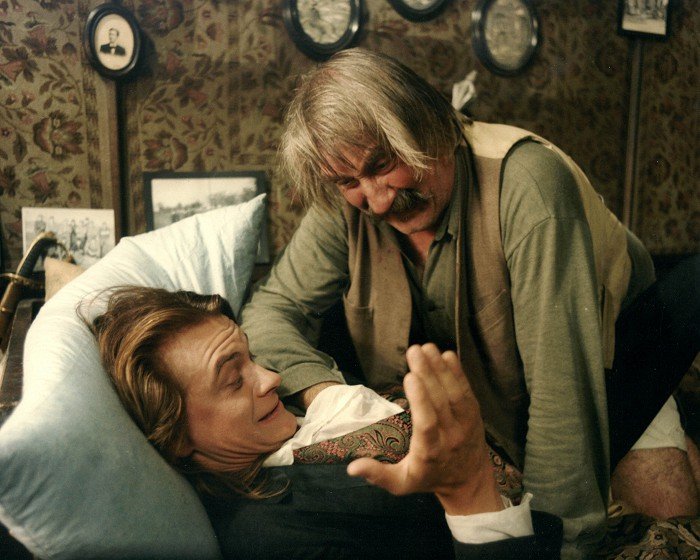
In the Flames of Royal Love (V žáru královské lásky, 1990)
Němec returned to Czechoslovakia a few weeks after the Velvet Revolution, and almost immediately managed to get a new feature made, though In the Flames of Royal Love (V žáru královské lásky, 1990) received a critical drubbing. Based on Ladislav Klíma’s fantastical novel The Sufferings of Prince Sternenhoch, it relocates the palace of its royal protagonist (played by rock star Vilém Čok, one of many controversial touches) to a television transmitter in Prague, though it retains its central narrative in which the prince falls hopelessly in love with a wayward and impulsive young woman, leading to humiliation and ultimately murder.
Code Name Ruby (Jméno kódu Rubín, 1996) fared no better with the critics, and rather worse in its distribution, though it provides rich pickings for those familiar with Němec’s earlier work. Part science fiction, part documentary, part found-footage collage and part Surrealist enquiry into Prague’s alchemical history, it intercuts the story of a young couple’s search for the ancient philosopher’s stone with archive footage of pivotal historical events, including the Second World War, assorted Czech leaders from Eduard Beneš to Havel, and the assassinations of Reinhard Heydrich and John F. Kennedy.
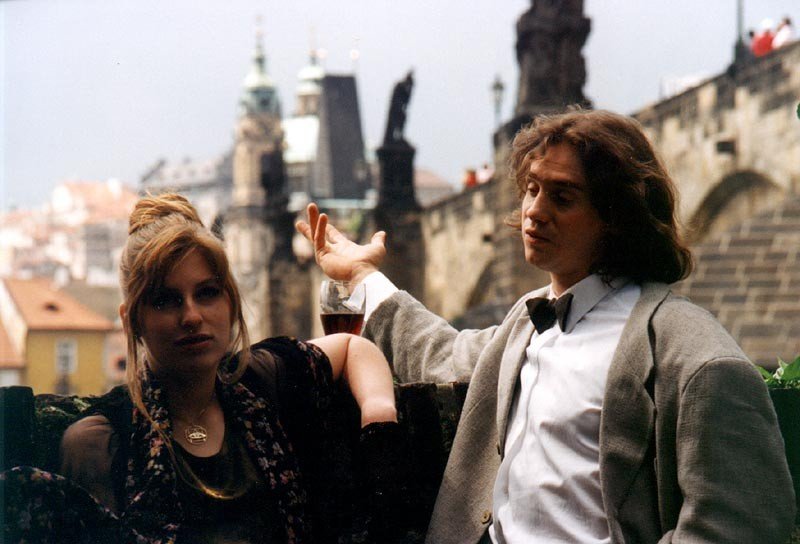
Code Name Ruby (Jméno kódu Rubín, 1996)
The new millennium saw Němec’s most autobiographical features, the shot-on-video, premiered-online Late Night Talks with Mother (Noční hovory s matkou, 2001) and Landscape of My Heart (Krajina mého srdce, 2004). Each combines elliptical voiceover reminiscence with historical footage and gruesome surgical close-ups, though in the case of the second film these are far from gratuitous, as Němec weaves shots of his own major heart surgery with a recollection of his aborted 1969 project with Havel. The title of the first film refers to an imaginary conversation between Němec and his late mother, which constantly breaks into the director’s reveries, shot through a fisheye lens so extreme that the entire image is framed by a circle.
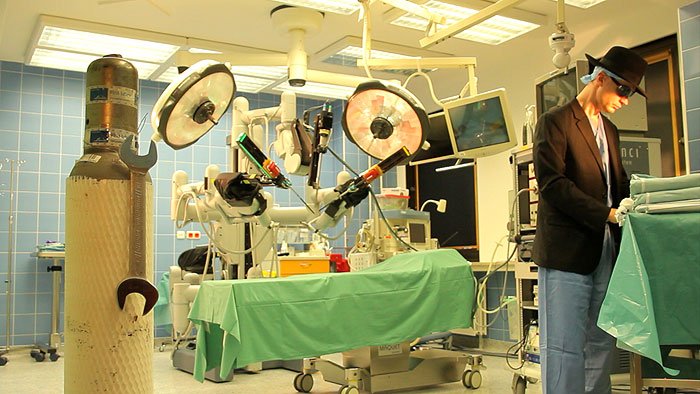
Landscape of My Heart (Krajina mého srdce, 2004)
Toyen (2005), given the cryptic double subtitle of ‘Splinters of Dreams’ and ‘Silence and Darkness’, is a characteristically fragmentary but richly imaginative portrait of the Surrealist painter Marie Čermínová (1902-80), advance knowledge of whose career is probably essential even for basic comprehension. Largely drawn from Toyen’s own writing, Němec’s visual treatment frequently superimposes ghostly, dissolving and disintegrating images from her paintings over dramatisations of events in her life.
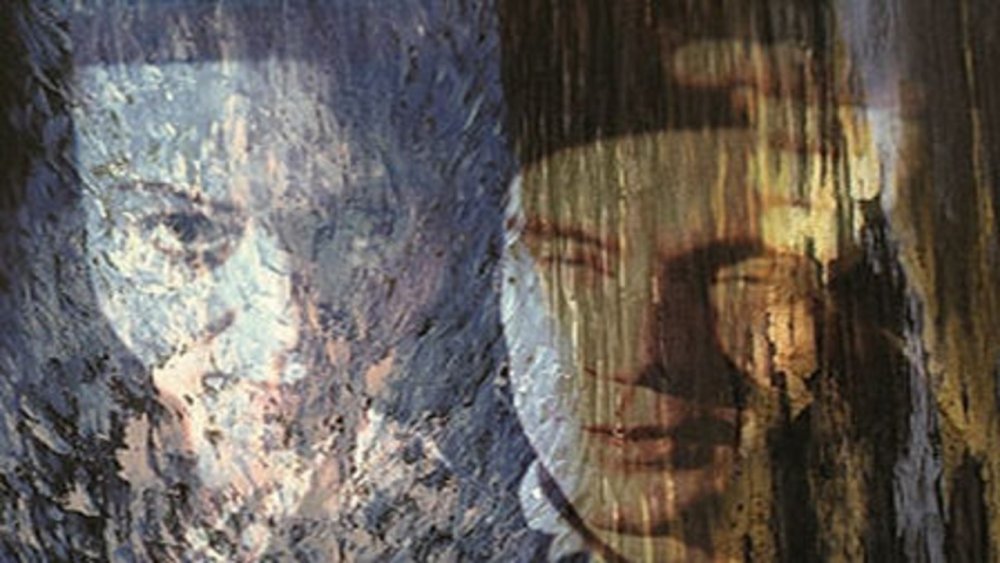
Toyen (2005)
Němec taught regularly at FAMU from 2006, and continued to make films fairly regularly. The docudrama The Ferrari Dino Girl (Holka Ferrari Dino, 2009) reconstructs the circumstances of Němec filming the Soviet invasion and smuggling the footage to Austria with the help of a girl named Jana. His final completed film, Heart Beat 3D (2010), the first stereoscopic Czech film, resurrected his 1969 screenplay for the second time, and he was well into production on The Wolf from Royal Vineyard Street when he died. One of his final public acts was to return his Medal of Merit, bestowed upon him in 2002, in protest at the choice of 2014 recipients.
Although some of his more recent films (especially Toyen and The Ferrari Dino Girl) were given a warmer reception than much of his post-1989 output, their distribution remained extremely limited, perhaps the inevitable price to be paid by an artist who so consistently pursued his own instincts outside the accepted mainstream. Would even Diamonds of the Night and The Party and the Guests have fared much better if made today? The odds must be against it.
Parts of this obituary were originally written for the booklet essays accompanying Second Run’s DVD releases of Diamonds of the Night and The Party and the Guests.
-
The Digital Edition and Archive quick link
Log in here to your digital edition and archive subscription, take a look at the packages on offer and buy a subscription.




